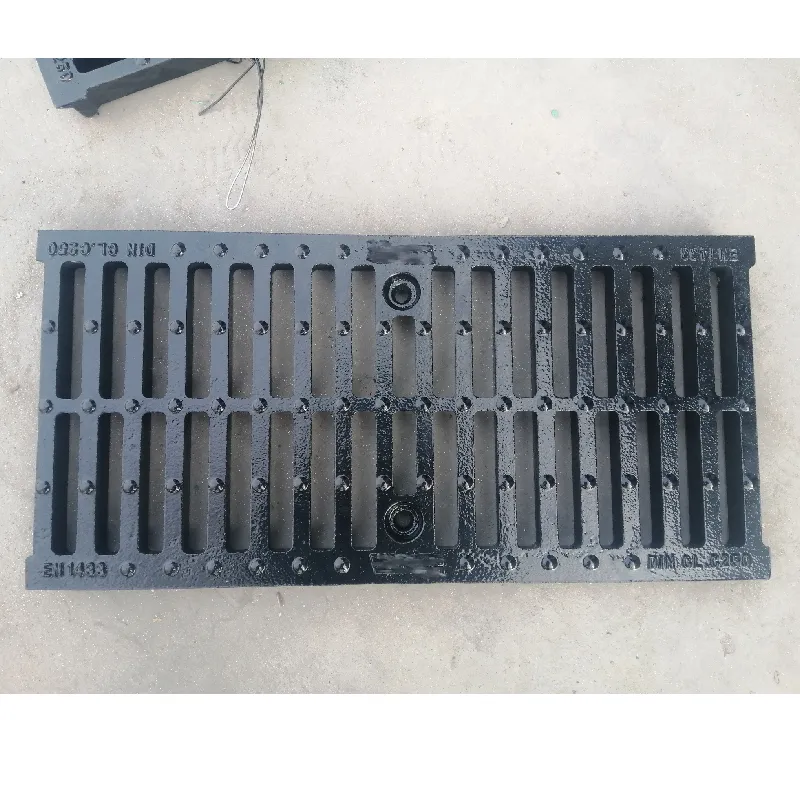Understanding Drainage Solutions with Trough Gratings for Effective Water Management
Understanding Drain Trough Grating An Essential Component for Efficient Drainage Systems
In various industrial and commercial settings, proper drainage is crucial for maintaining a safe and operational environment. This is where drain trough grating plays a vital role. These grating systems are designed to facilitate effective water drainage while ensuring the safety of personnel and equipment. This article delves into the significance of drain trough grating, its various types, materials, installation, and maintenance considerations.
What is Drain Trough Grating?
Drain trough grating refers to the grid-like surface covering installed over drainage channels or troughs. These systems prevent debris and large particles from clogging the drainage pathway while allowing liquids to flow through freely. The design often features bars or slats spaced apart to permit efficient water passage, yet closely arranged enough to support foot traffic or vehicle movement.
Importance of Drain Trough Grating
The primary purpose of drain trough grating is to ensure effective drainage in various facilities, including industrial plants, food processing facilities, parking lots, and municipal areas. By preventing blockages, it minimizes the risk of flooding, which can cause extensive damage to property and pose safety hazards. Additionally, it helps maintain hygienic conditions, particularly in environments prone to spills or wastewater, by enabling quick and efficient drainage.
Types of Drain Trough Grating
Several types of drain trough grating are available, each suited for specific applications. The most common types include
1. Steel Grating Known for its strength and durability, steel grating is an excellent choice for heavy traffic areas. It can support substantial loads while remaining resistant to corrosion when galvanized or coated.
2. Fiber-Reinforced Polymer (FRP) Grating Lightweight yet robust, FRP grating is ideal for corrosive environments. It is non-conductive and resistant to a range of chemicals, making it suitable for industries like chemical processing and wastewater treatment.
drain trough grating

3. Aluminum Grating Offering a balance between strength and lightweight design, aluminum grating is easy to handle and resistant to rust. This type is often favored for applications where weight is a concern.
4. Plastic Grating Economical and lightweight, plastic grating is suitable for less demanding environments. It often finds use in residential applications or areas with minimal load requirements.
Installation Considerations
The installation of drain trough grating requires careful planning and execution to ensure optimal performance. Factors such as load requirements, local climate conditions, and the type of environment must be considered when selecting the appropriate grating material. Proper alignment and secure fastening are crucial to prevent shifting or displacement over time.
In addition, adequate drainage channel sizing must be calculated to accommodate the expected water flow. Engineers often conduct hydrological studies to determine peak flow conditions and ensure the system can handle potential surges effectively.
Maintenance of Drain Trough Grating
Maintaining drain trough grating is essential for sustaining its functionality and extending its lifespan. Regular inspections should be performed to detect any signs of wear, corrosion, or blockages. Debris accumulation can hinder drainage efficiency, so routine cleaning is necessary, especially in busy environments or areas with high foot or vehicle traffic.
Additionally, it's essential to monitor the structural integrity of the grating. Over time, grating can become loose or deform, compromising safety and drainage efficacy. Addressing these issues promptly through repairs or replacements is vital.
Conclusion
In summary, drain trough grating is a critical component of effective drainage systems in various settings. By understanding its importance, types, installation requirements, and maintenance procedures, facility managers can ensure that their drainage systems remain efficient, safe, and reliable. Investing in high-quality drain trough grating not only protects physical assets but also enhances safety and hygiene in the workplace, underscoring its value across many industrial applications.
-
The Smarter Choice for Pedestrian AreasNewsJun.30,2025
-
The Gold Standard in Round Drain CoversNewsJun.30,2025
-
The Gold Standard in Manhole Cover SystemsNewsJun.30,2025
-
Superior Drainage Solutions with Premium Gully GratesNewsJun.30,2025
-
Superior Drainage Solutions for Global InfrastructureNewsJun.30,2025
-
Square Manhole Solutions for Modern InfrastructureNewsJun.30,2025
-
Premium Manhole Covers for Modern InfrastructureNewsJun.30,2025
